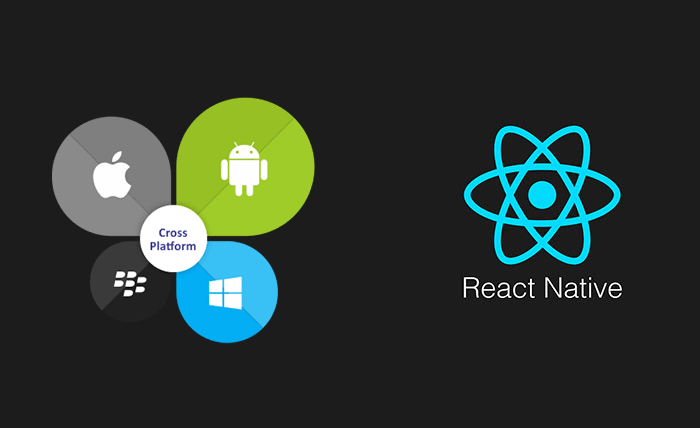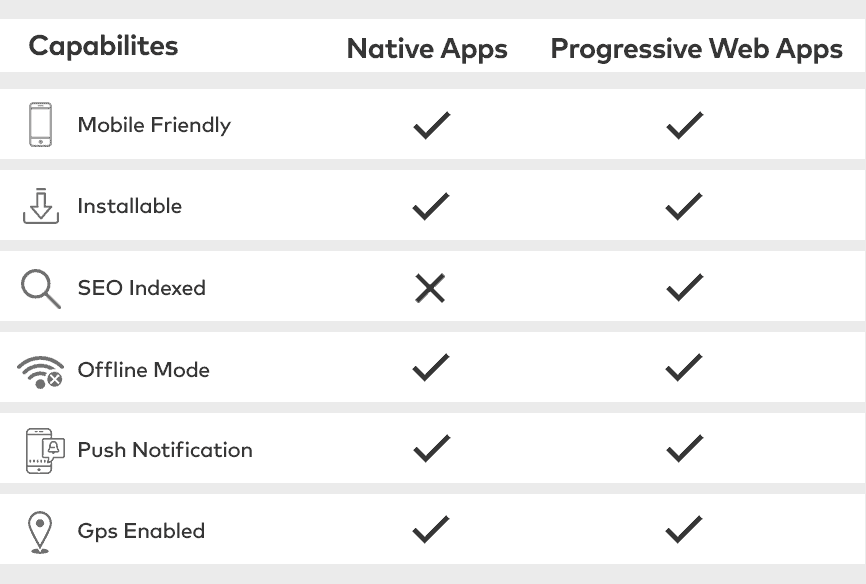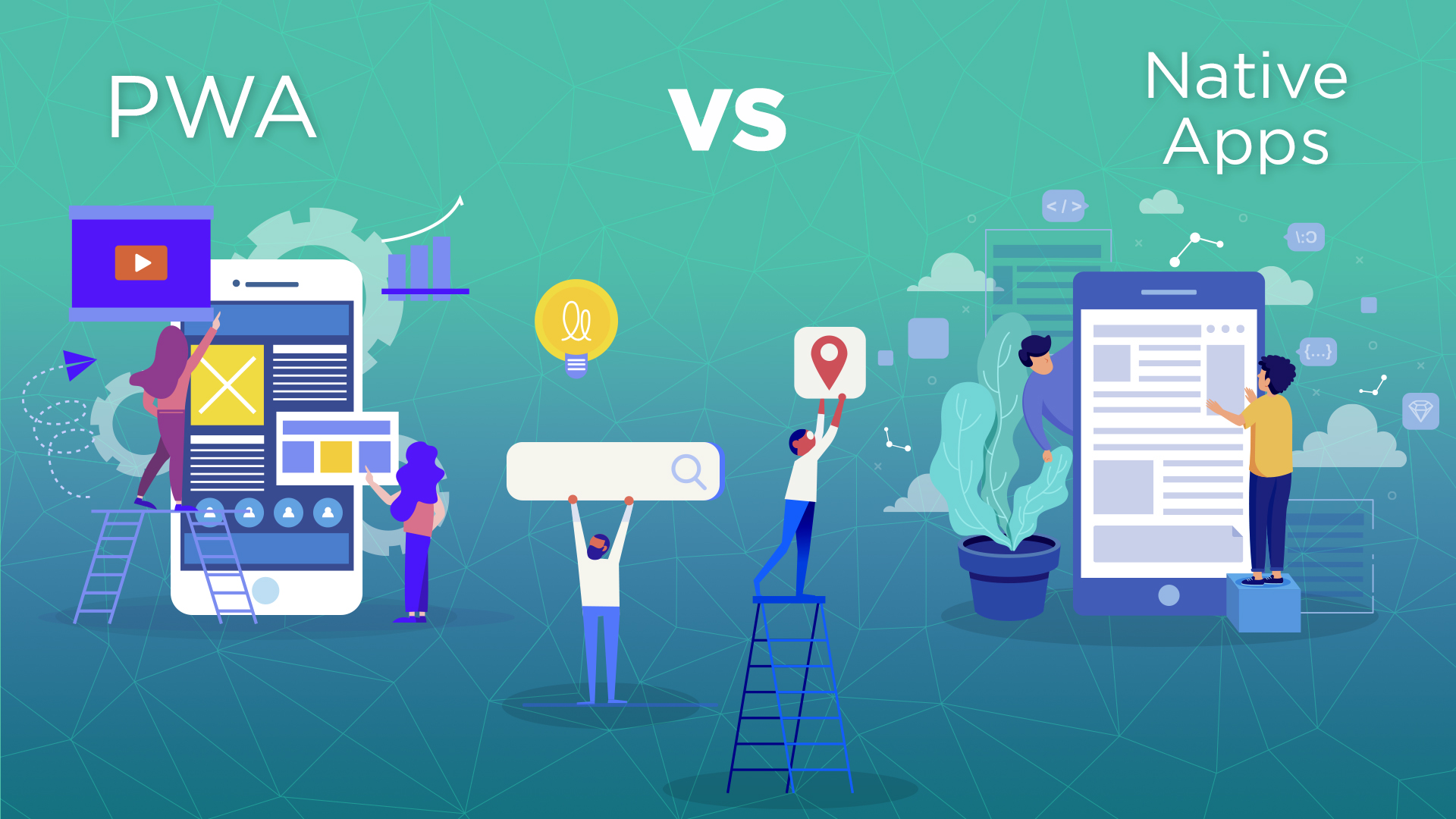Which is Better: PWAs or React Native?
Table of Contents
Users spend twice as much time on mobile devices as they do on desktops these days, so it’s no surprise that they demand two things: great performance and storage efficiency. As a result, a battle between native apps and progressive web apps has erupted. PWAs are a relatively new technology compared to mobile apps, which are well-known smartphone “programmers.”
As a response to customers’ demands, developers strive to find the ideal solution that would make their users happy, but this is not always an easy task.
Progressive and React native apps are two kinds of web applications that use distinct technologies.
These technologies only had a chance to develop because of the creation of “XML” and “HTTP” queries, which provided a rostrum to get data from a “URL” without refreshing the page.
Progressive Web Application
A progressive web application (PWA) is a kind of web-based application software developed using standard web technologies such as HTML, CSS, and JavaScript.
It is designed to operate on any platform that supports standards-compliant browsers, including desktop and mobile devices.
There is no particular file that must be installed; therefore no platforms such as “play store” or “iOS store” are required to install these apps.
These apps are built using popular web technologies such as HTML, CSS, and JavaScript.
When PWA first appeared on the market in 2015, several major companies embraced it, and it helped their businesses in a variety of ways. Take a look at what PWA accomplished for Twitter, Nikkei, and Hulu.
Because a progressive web app is a kind of webpage or website is known as a web application, no additional bundling or distribution is required.
Developers need to publish the web application online, verify that it satisfies basic “installability criteria,” and users may add the programmer to their home screen. It is optional to publish the software to digital distribution platforms such as the Apple App Store or Google Play.

As of 2021, Google Chrome, Apple Safari, Firefox for Android, and Microsoft Edge all support PWA capabilities to different degrees, while Firefox for desktop does not.
Benefits of PWA
The advantages of PWA Include:
- Progressive\Responsive \Secure
- It’s both searchable and shareable.
- Installable
- Linkable
- A single source of code (for all platforms)
- Reduced development costs
- Less interference from app stores
- The ability to publish on the Google Play Store.
- Shorter installation time simpler to keep up to date – updates do not need any user involvement more easily shared
Disadvantages
The Disadvantages of PWA includes:
- Hardware access is restricted.
- Some browsers do not support it.
- Heavy operations have limited performance.
- Reduced efficiency
- There is no geofencing or background processing.
- High battery consumption is still a new technology, and not all browsers fully support it at the present.
When you need simple distribution, are on a budget and have a short time to market, Progressive Web Apps are the way to go. They’re also utilized by businesses that want to reach a large number of people.
React Native App
“React Native is a JavaScript-based framework for creating genuine, natively rendered mobile apps for both iOS and Android.”
React is a JavaScript building block. Its primary focus is on mobile platforms, or more specifically, web developers now have the ability to create mobile applications that have a complete look and feel that is genuinely native.
React native is well-known for bringing the mobility and efficiency of the web to a smartphone. For their web apps to perform effectively, the world’s biggest IT and digital firms have embraced react native.
Facebook created the React Native framework. It creates UI components with JavaScript code. Apps developed using React Native are compatible with both iOS and Android, and the code may be used for both.

Giants like Instagram, Facebook, Tesla, and others employ React Native mobile applications.
Benefits of Native App
The advantages of native apps include:
- They are quicker, safer, and more dependable.
- Time management
- Excellent performance
- More rapid development
- Cost-effective
- With the built-in device characteristics,
- NFC enables excellent interconnectivity
- Integrations with third-party services
Disadvantages of Native App
The Disadvantages of Native app includes:
- It increased time and development costs, as well as the requirement to learn a language for each platform (but can be resolved using React Native)
- The learning curve is steep
- Facebook dependent
- Native code required
- Required to be downloaded
- No SEO is necessary
- Market reach is limited
Native apps are ideal for people that place a premium on performance. If you want your app to communicate with other applications and built-in device capabilities, React Native is a good option.
Which one should you pick?
Learning new technology and training people on it always has a hefty price tag. When it comes to creating a great user experience, both PWAs and React Native have high learning curves, especially at the important last mile, so keep this in mind as a factor.
Consumer apps demand a greater level of aesthetic refinement, which makes React Native a better choice because you get to interact with native UI controllers.
Corporate apps should be aesthetically appealing as well, although this isn’t always a difference because most enterprise programmers can’t be replaced with something comparable. Most corporate requirements may be met by a solid PWA with (optionally) decent offline capabilities.
If one or both desktop and mobile are to be considered, if just a desktop is being considered, react-native should be avoided. Though desktop versions of React Native are widely accessible, most are not maintained by the React team and have several holes that a person must fill.
A PWA will function fine on desktops, but if you want additional native access to lower-level APIs, the browser security sandbox will prevent you from obtaining that access unless you use a Web View within a native app (similar to Electron).

To summarize, in order to choose between PWA and native development, an individual must first identify and assess their goals, as well as narrow down what features are necessary and any additional functionality the individual intends to provide to the user. If the final solution is not critical, it will most likely be faster and less expensive to create a progressive web application rather choose the more expensive side that is react-native. Similarly, if a person desires a quicker app, he or she should use PWA.
PWA is not capable of bringing anything new to current apps; in this case, a combination of both may be acceptable for an individual’s business objective and success.
Let’s do the FIRST DIGITAL HANDSHAKE with URBAN ARTS !!!
With the right mindset and the right information, anything can be accomplished. If you’d like to add more to this article, share your thoughts below in the comments section.
You can also provide us with your feedback at ask@urbanarts.pk Reach out to the leading digital marketing team of URBAN ARTS

